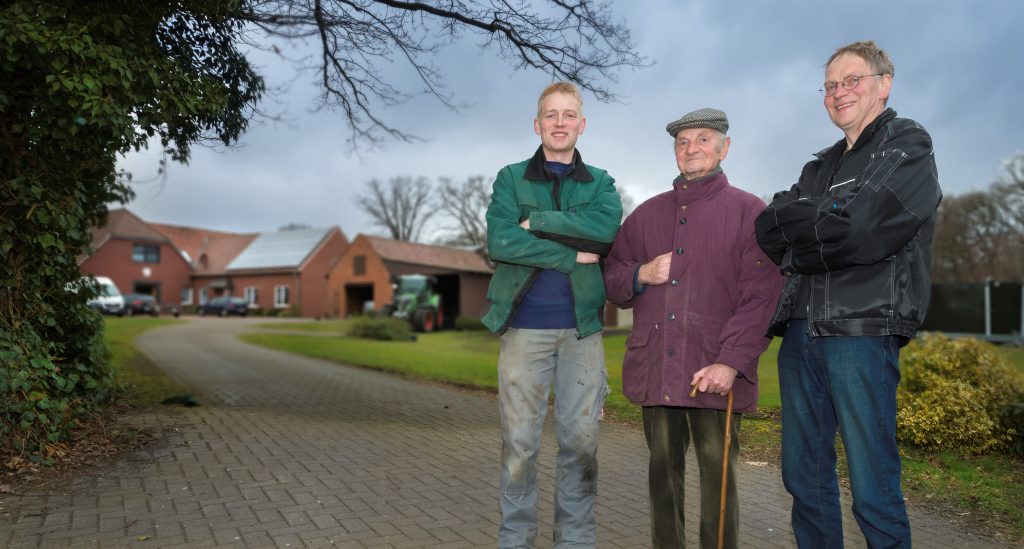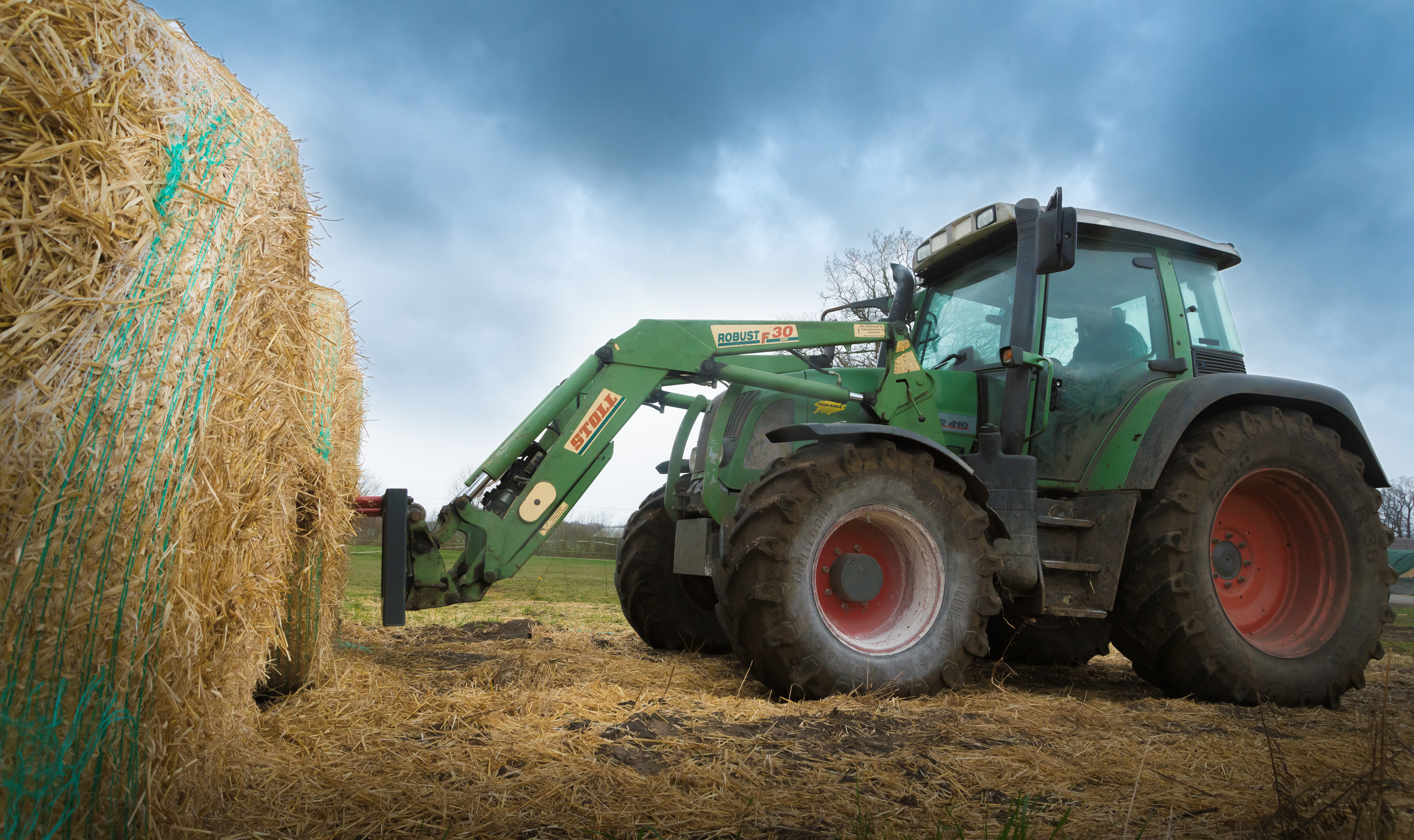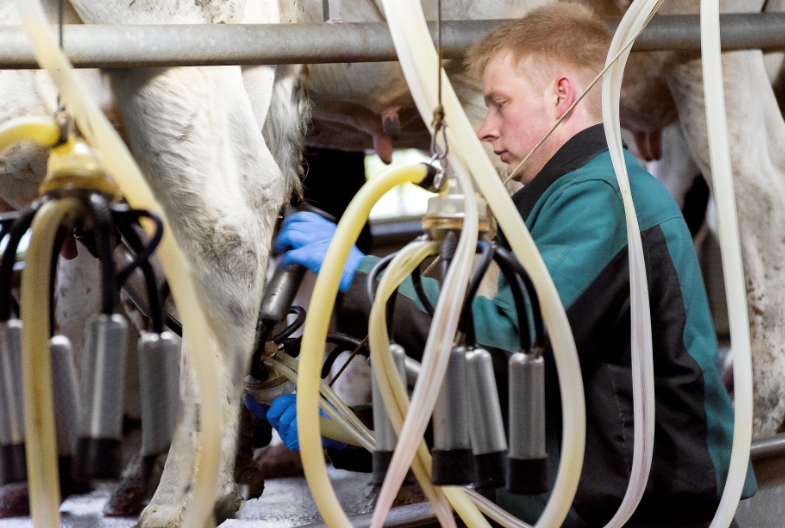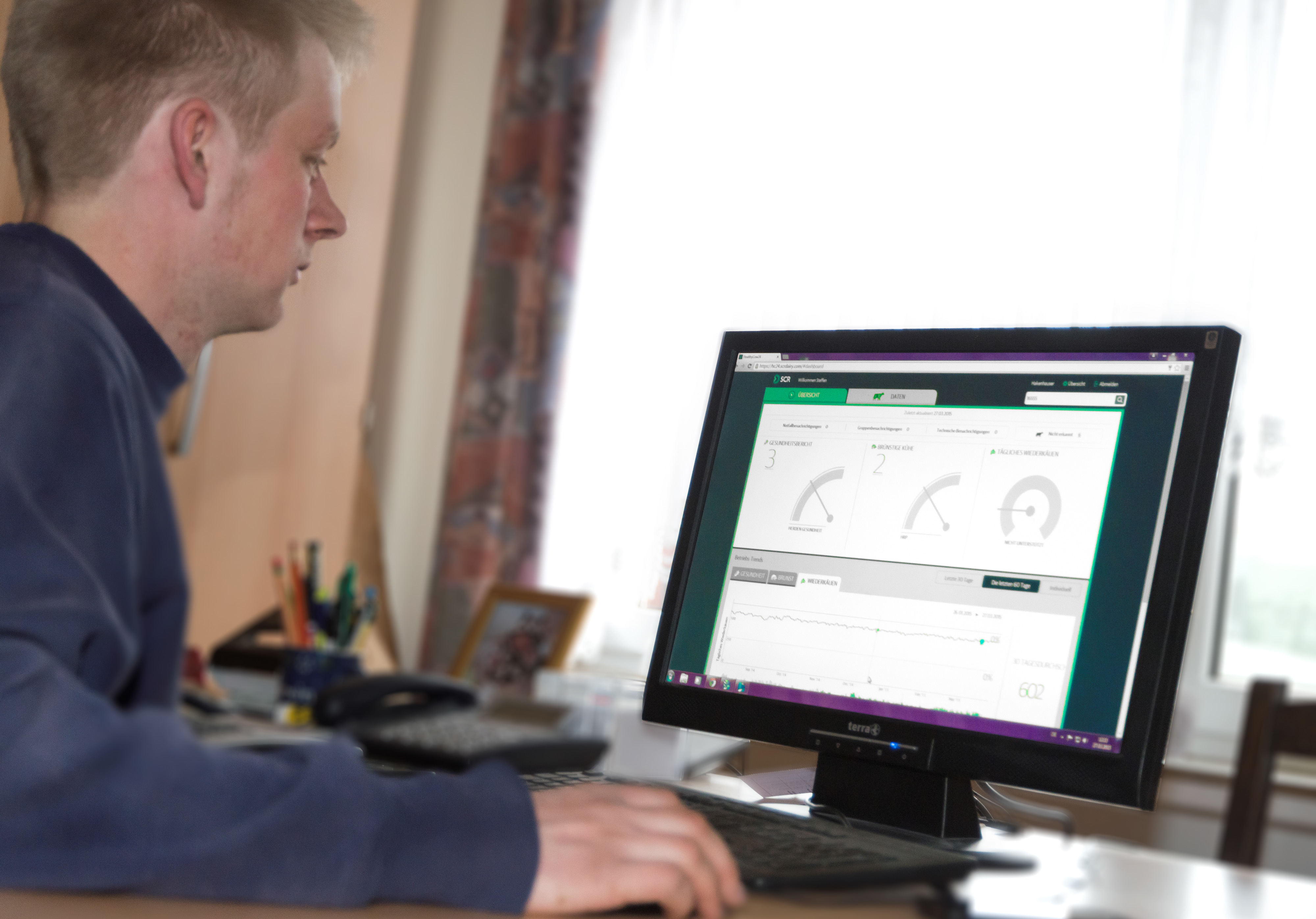
Connected cows help farms keep up with the herd
Steffen Hake knows the long, gritty hours involved in running a successful dairy farm, a life that can mean climbing out of bed before dawn and working past sundown — but he has an edge that generations of farmers before him never had.
“When I get up in the morning and put on my boots, I don’t go to the stables first,” he says. “I check my PC for alerts about whether any cows are sick, and I’m in the know right away.”
The reason is a modern breakthrough for a traditional industry. SCR Dairy calls its approach “HealthyCow24,” a solution based on the Internet of Things that uses Windows Embedded software and Microsoft Azure cloud technology.
Farmer Steffen Hake and his father, Erwin, use SCR Dairy’s technology on the farm.
This cow-monitoring system gives farmers insights that can boost milk production, smooth the calving process and ensure healthier cows — all while saving time.
And time is important for farmers like Hake, who has worked on his parents’ co-op farm in Wagenfeld-Ströhen, Germany, since 2005 and now manages 240 cows with help from his father and a few other workers. He’s part of a younger, tech-savvy generation that wants to do and experience more, both on and off the farm.
Having “connected” cows through the Israel-based company’s technology means he no longer has to dedicate nearly all of his time to monitoring his prized milk producers.
“If I had told this to someone a couple of years back, they would have thought man, you’re nuts,” Hake says. “But that’s the technology. It works.”

For hundreds of years, the dairy business remained essentially the same. A family would milk its own cows and sell any surplus to neighbors or the local community.
But over the last century, new machines were invented, urban populations exploded and the price of land skyrocketed. These trends and others put pressure on farms of all types to consolidate, specialize and increase production to keep supermarket shelves full.
Today a small farm only needs a few hands to manage dozens or even hundreds of cows, but maintaining a direct connection with each animal is still critical. One big reason why is that dairy cows must constantly be in a cycle of getting pregnant and giving birth in order to produce milk, and there is only a short window for insemination to be successful when a cow goes into heat.
In the past, farmers had far fewer animals and were able to spend hours each day watching their cows for signs, but today, with so many to keep track of, there isn’t always time for such careful monitoring.
That’s where SCR Dairy comes in. The company’s Heatime solution includes necklace tags with motion sensors and microphones that monitor the cows’ activity and rumination levels. Using an application that can run both on-premises or in the cloud, the system alerts farmers of increased activity that often means an animal is in heat or decreased rumination, which can indicate a health problem.
Cows’ activity and rumination levels can reveal valuable information.
“To identify a cow in heat, you need to spend at least 20-30 minutes in the stables per day, four to five times a day,” Hake says. “This time has now been eliminated.”
The system aggregates data from the sensors and conveys it to the farm’s office, and it’s available through a mobile application so farmers have access to data about cows’ heat cycles and health from anywhere at any time. It also allows farmers to make lists, prepare reports, sort cows by category and track each animal’s overall history.
SCR Dairy now has about 4 million tags connected to cows around the world, monitoring their activity and wellbeing 24 hours a day. The data generated from the tags is transferred to management solutions that help farmers make better decisions, as well as providing alerts.
“We have alerted farmers of cows having, for example, a prolonged calving, or a difficult labor, in the middle of the night,” says Matteo Ratti, vice president of SCR’s Cow Intelligence business. “They were able to go out and save the cow. With this technology, farmers get the information they need to manage the herd more efficiently.”

Enabling farmers to be more productive, expand their operations and take better care of their livestock isn’t just good business, according to Ratti— it’s critical to the future of the dairy industry.
“We hear it a lot from the farmers,” he says. “Young farmers are looking for technology solutions to make the work more efficient and more profitable, and they would not go into this business if the technology was not there. They need to be able to be away from the farm and still be connected.”
Running a dairy is hard work, but Hake says he wouldn’t trade it for anything else.
“I like the diversity of my job,” he says. “Riding the tractor, that great machine, that’s fun. Or when one of your cows is sick, and you are able to heal her so she is fully recovered after two days, that’s great motivation to me.”
Over the past two years, he’s realized plenty of ways the technology helps him do more in less time on the farm, which is a big deal for many in the younger generation taking over family farms today.

Hake finds freedom in being able to access all of the information from his smartphone so that he’s no longer tied to a specific location. And now that his family is renting a stable in a neighboring village seven miles away, the ability to monitor the cows remotely has become even more useful.
“We aren’t there very often, so we wouldn’t see when a cow is in heat,” he says. “That’s what makes this technology so helpful. When a cow is in heat or eats less than anticipated because she starts coming down sick, there is a warning indicator for me. And that’s a great thing.”
Lead photo: Steffen Hake, his grandfather, Ernst, and his father, Erwin, on the family’s co-op farm.
Photos by Peer Schmidt/Fokus Werbung und Fotografie














